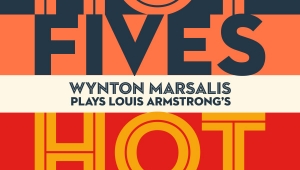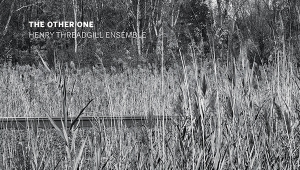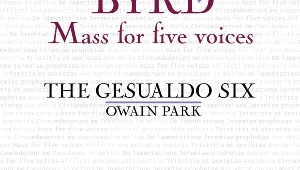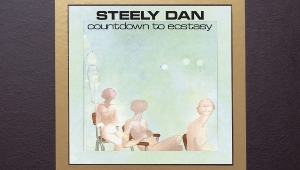| Columns Retired Columns & Blogs |
Recording of January 2005: Beethoven: Complete Music for Cello & Piano
BEETHOVEN: Complete Music for Cello & Piano
Cello & Piano Sonatas: in F, Op.5 No.1; in g, Op.5 No.2; in F, Op.17; in A, Op.69; in C, Op.102 No.1; in D, Op.102 No.2. Variations: in F on Mozart's "Ein Mädchen oder Weibchen," Op.66; in E-flat on Mozart's "Bei Männern," WoO 46; in G on Handel's "See, the Conquering Hero Comes," WoO 45
András Schiff, piano; Miklós Perényi, cello
ECM New Series 1819/20, B00003389-02 (2 CDs). 2004. Manfred Eicher, exec. prod.; Stephan Schellmann, eng. DDD. TT: 2:31:19
Performance ****½
Sonics ****
Cello & Piano Sonatas: in F, Op.5 No.1; in g, Op.5 No.2; in F, Op.17; in A, Op.69; in C, Op.102 No.1; in D, Op.102 No.2. Variations: in F on Mozart's "Ein Mädchen oder Weibchen," Op.66; in E-flat on Mozart's "Bei Männern," WoO 46; in G on Handel's "See, the Conquering Hero Comes," WoO 45
András Schiff, piano; Miklós Perényi, cello
ECM New Series 1819/20, B00003389-02 (2 CDs). 2004. Manfred Eicher, exec. prod.; Stephan Schellmann, eng. DDD. TT: 2:31:19
Performance ****½
Sonics ****
There are times when even I will admit that the attachment Stereophile obviously has to the work of ECM founder-producer Manfred Eicher borders on the embarrassing.
 The logic behind this is very simple: When and if Eicher stops coming up with the goods, we'll stop printing nice things about his records. In this day and age, when the record business is standing on its head and bereft of ideas, either creatively or on the sales side, Eicher seems to adhere to a once-venerated notion in the record business: make good records and customers will come. Few in the business today have his vision, or his clear sense of spotting and nurturing talent. Nor can many still say that their record labels are successes—and remember, this label sells selling skwonky jazz and difficult classical music.
The logic behind this is very simple: When and if Eicher stops coming up with the goods, we'll stop printing nice things about his records. In this day and age, when the record business is standing on its head and bereft of ideas, either creatively or on the sales side, Eicher seems to adhere to a once-venerated notion in the record business: make good records and customers will come. Few in the business today have his vision, or his clear sense of spotting and nurturing talent. Nor can many still say that their record labels are successes—and remember, this label sells selling skwonky jazz and difficult classical music.
In the past year, Eicher, perhaps aware that his classical music offerings were getting too esoteric, has scored an impressive success with pianist Till Fellner's reinvention of Book I of J.S. Bach's Well-Tempered Clavier, which was Stereophile's "Recording of the Month" for June 2004. One of the most recorded (some would say over-recorded) works of the standard repertoire, WTC was spun around and made new thanks to Fellner's patient, laconic interpretation.
Now Eicher, the great pianist András Schiff, and cellist Miklos Pérényi have waded into another towering, much-recorded bit of standard rep, Beethoven's Cello Sonatas. When I mentioned to a friend that I was writing this and began listing what my favorite recorded interpretations were, the response was, "Yeah, but they're all dead." Actually, in most recent recordings only one side of the greatest Cello Sonata pairings is gone: Richter and Rostropovich (Philips) and Du Pré and Daniel Barenboim (Angel/EMI). In the case of Emanuel Ax and Yo-Yo Ma (Sony Classical), both are still very much alive.
The pairing of personalities is the source of the richness in these works and the key to their success in performance. The interplay between the cello and piano can become either a conversation or a shouting match. The low registers of the instruments do tend to collide in spots, and given the inevitable horse race between the sort of strong-willed instrumentalists it takes to play these works with the requisite touch and flair, someone always tries to become the dominant voice.
Another challenge is the notion that either the cello or the piano is meant to be the minor voice; that the scores, are written for cello and piano, tells the tale. In performance, the pendulum has swung back and forth; as many cellists have grumbled about being subordinated as have pianists. In this recording, both instrumentalists are equal partners; the balance in these surprisingly joyous interpretations is extraordinary.
In the wrong hands, the sonatas can be a bit too slow and a bit too serious, their lighter lines and more melodic moments sacrificed on the altar of right and proper Ludwig van Gravitas. One of the quirks of the five cello sonatas is that they were written over a span of nearly 20 years: the first two in 1796, No.3 Op.69 in 1807–8 (just after Symphony 5), and the final pair in 1815. Over this time Beethoven underwent enormous physical and emotional changes, some of which are reflected in the sonatas. This set is filled out with the relatively obscure Sonata in F, Op.17, originally written for horn, as well as better-known sets of variations on themes by Mozart and Handel.
While there's plenty of empty space and enough darkness in this performance of the G-minor sonata, Op.5 No.2, for those who want that sort of counterbalance, Schiff effortlessly brings out the lighter colors with just the right light touch to offset the deep timbres of Perényi's cello. In the Allegro, the pair's shared rhythmic bounce, as well as their rising and falling lines, together and apart, are breathtaking, and evidence again that these are most assuredly not minor works in the Beethoven canon.
In Op.69, the most heroic sonata of the five, Schiff and Perenyi—the latter a relative unknown quantity who distinguishes himself here with an abounding tone and precise attack—marshall the sweeping themes into an explosion of tonal colors and rapid fire virtuosity.
The final pair of sonatas, written after the composer's hearing loss had become severe but before his brother died in November 1815, are nevertheless tinged with an obvious sadness that often provides the acid test of the emotional depths reachable by any given pairing of cellist and pianist. Here Schiff is again masterful, giving the works' exquisitely melancholy cello lines preeminence. These final two sonatas also contain driving duo passages in which both players unleash their virtuosity to great effect.
As with all ECM recordings, the sound is full-range, and impossibly crisp and defined—the sonorities of the cello have rarely been this well recorded. The balance between the instruments and their placements on the soundstage are flawless.
Given the long and sublime recorded history of these sonatas, it's hard to judge where this set will fit. After an exhaustive bout of A/B comparisons, they seemed to me sprightlier, more open to Beethoven's playful side, than either the Du Pré or Rostropovich sets. It may be that these interpretations are geared to a new century that appreciates things a bit faster, lighter, and sunnier. Martin Meyer may have said it best in his notes for this set: "Every period has its own approaches and connections to the masters—art is not a static representation; on the contrary, it lives from history for further history."—Robert Baird
- Log in or register to post comments



































